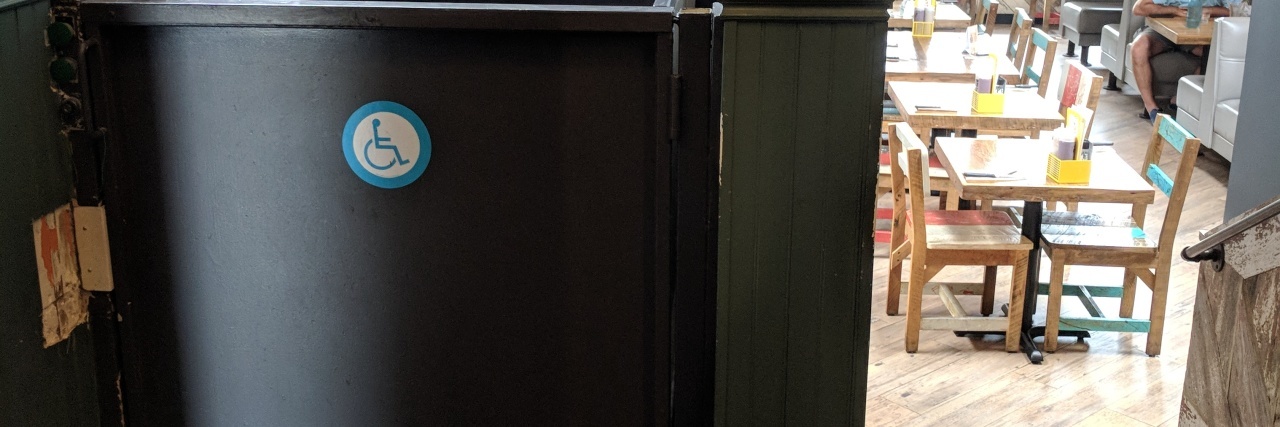I went out to eat the other day, and while I was there I had to use the restroom, which was up a few stairs. Not a full flight, probably somewhere between five and 10 steps. I typically use a cane for support as a result of arthritis and sarcoidosis but I figured I would be able to manage this, even though stairs usually hurt my joints more than regular walking.
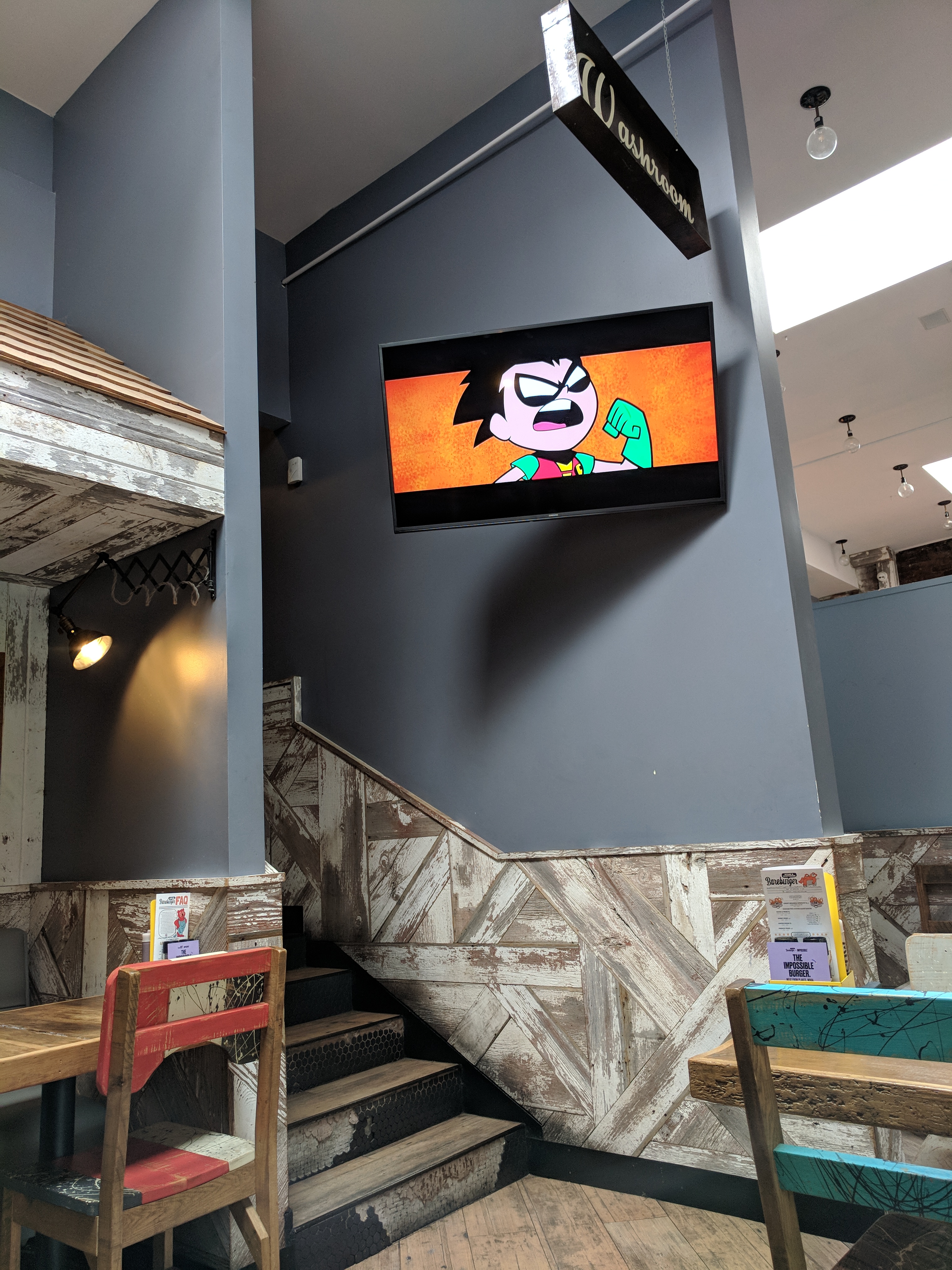
I looked for a ramp afterwards, because there had to be a way for someone who cannot do stairs at all to get there, right? Right. I did not find a ramp; instead, what I saw was this.
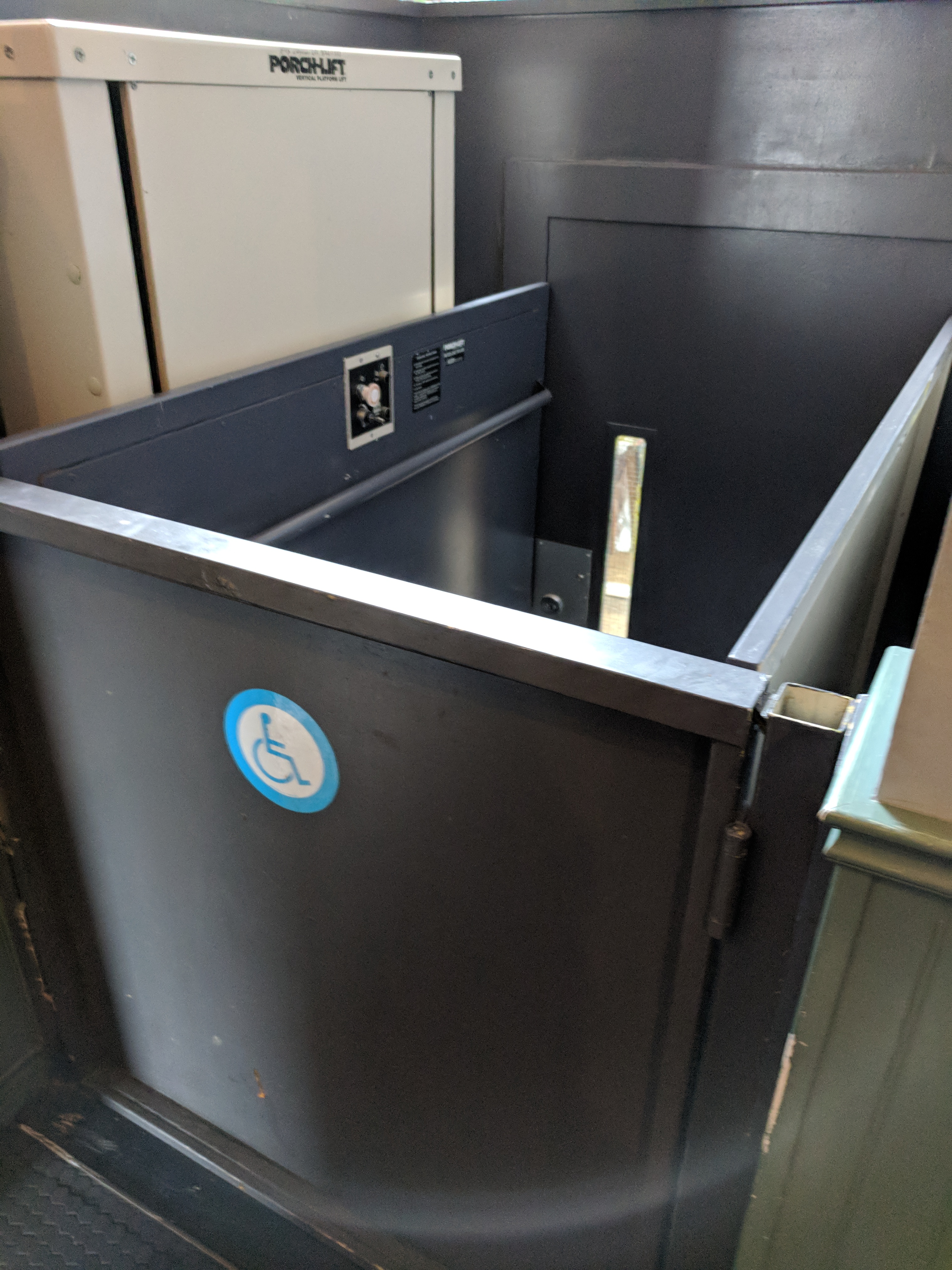
If you can’t tell what this is, it’s an industrial wheelchair lift, one that requires a second person with a key to operate it. So if someone in a wheelchair has to go to the bathroom, he has to first get staff’s attention, and say like a child in kindergarten, “Excuse me, I have to go to the bathroom.”
Chances are that staff person won’t have the key, so she’ll have to go find the key, or find the person with the key, who will likely finish whatever she’s doing before attending to this customer. Then there’s the big production — which draws the attention of half the restaurant — of opening the lift and maneuvering the customer into it, or staring while the customer maneuvers into the tiny space. These units often beep loudly while in motion, drawing the attention of anyone left in the restaurant who isn’t already looking.
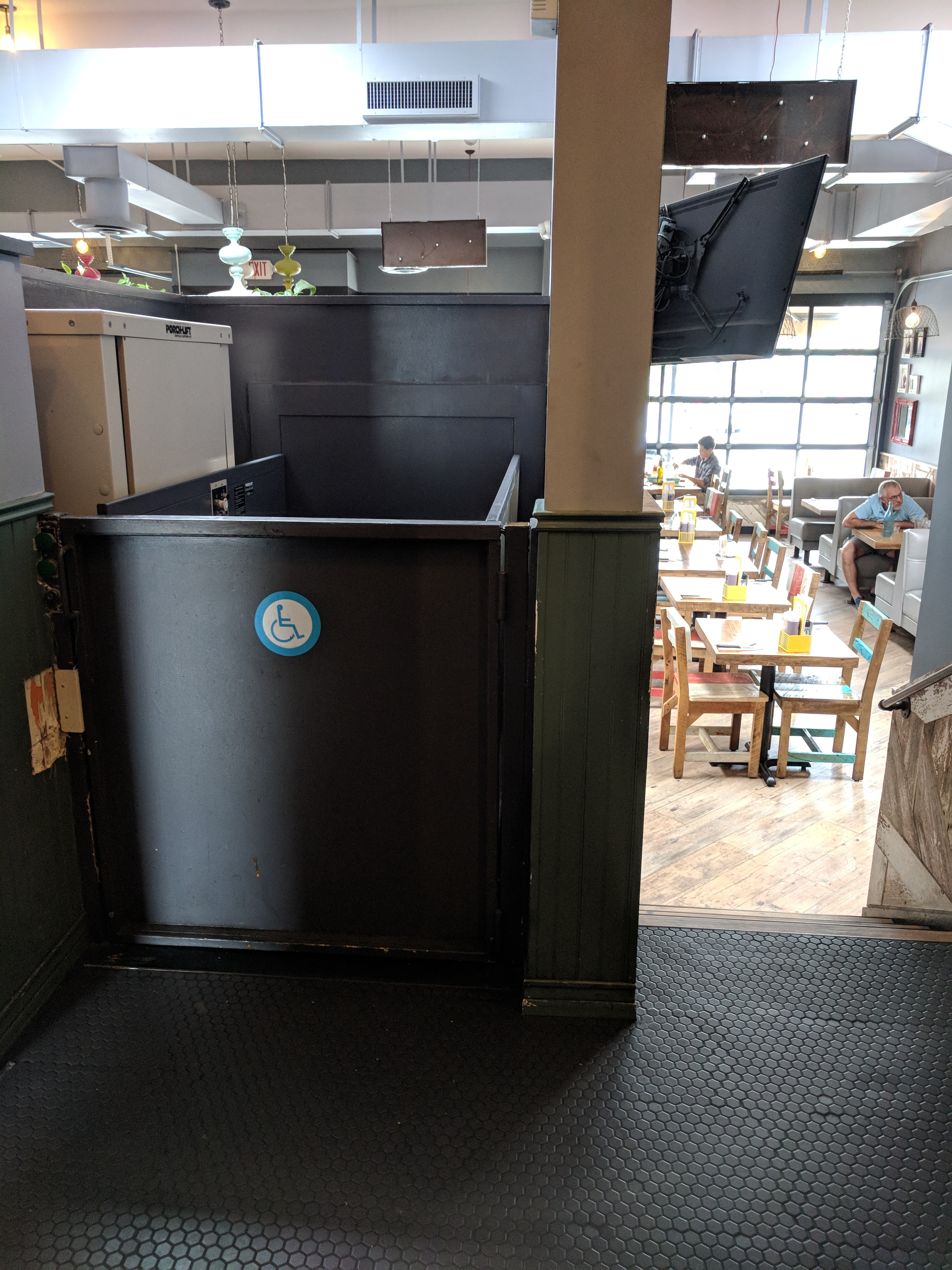 After using the facilities, the customer then has to either wait until someone makes eye contact from the main floor, or yell out to find someone (drawing everyone’s attention once again), and repeat the painful process once again.
After using the facilities, the customer then has to either wait until someone makes eye contact from the main floor, or yell out to find someone (drawing everyone’s attention once again), and repeat the painful process once again.
This is not acceptable.
It may technically be compliant with ADA regulations, but it is not right. It robs a person with a disability of the ability to do something as simple as going to the bathroom independently. It not only takes away their independence, but robs them of their dignity, making them a spectacle for everyone to watch. And it takes a long time, which is not always something one can afford when needing to use the bathroom. This may be legal, but it is not good enough.
I had to use one of these lifts once, while I was in Washington, D.C. to meet with my U.S. Senators and House Representatives to discuss legislative issues related to health care. Those days on Capitol Hill require a lot of walking, and I would not be able to participate if not for my mobility scooter. If this lift situation had arisen on my way to a meeting, I would surely have brought it up. Who am I kidding? If this had happened on my way to a meeting, I would not have made it to the meeting.
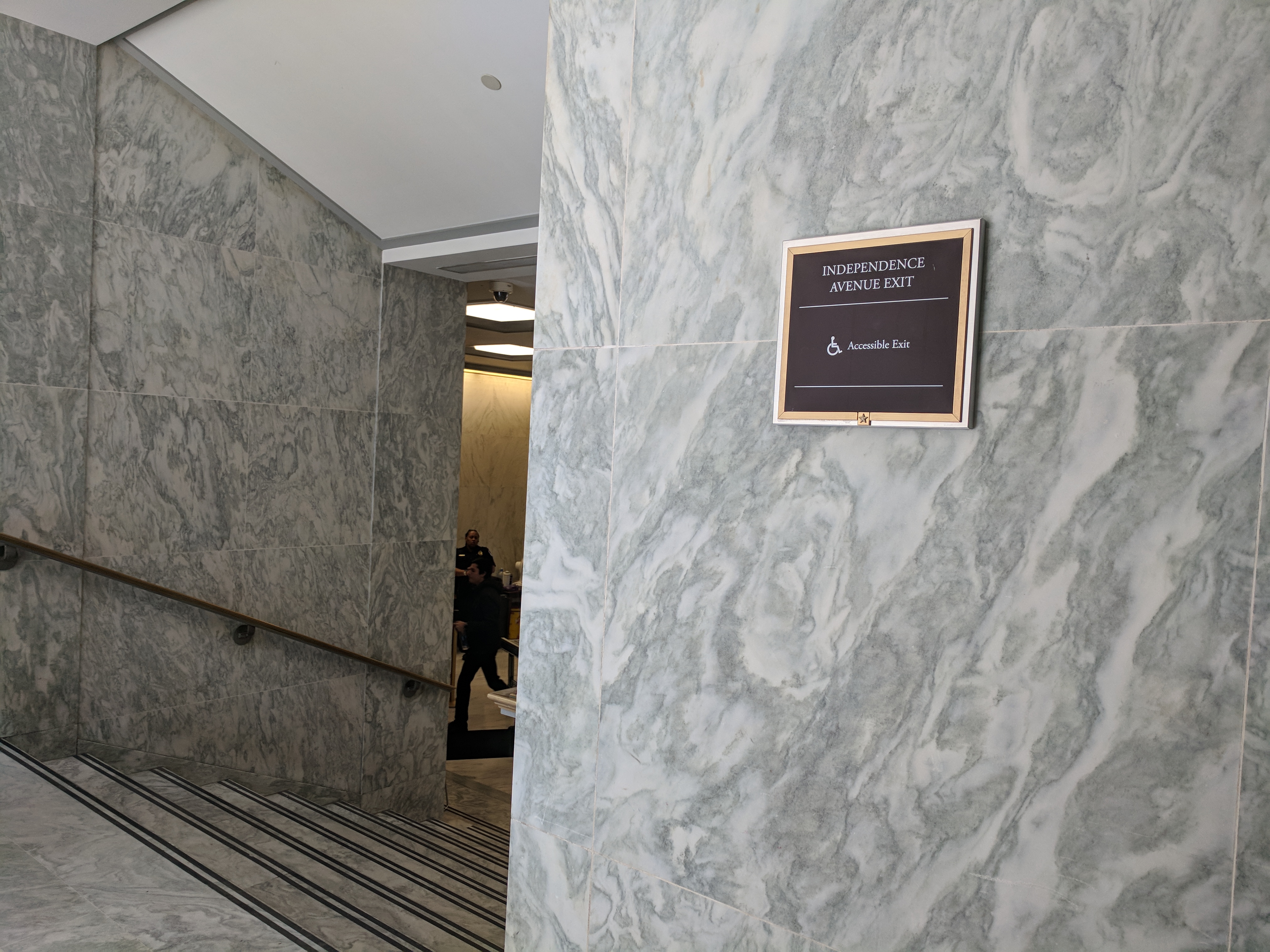
I had to wait over 15 minutes for someone to come with a key to operate the lift, and it took another 10 minutes for me to get down — and that’s after spending a good 10 minutes trying to find an “accessible” exit, five minutes by the lift, trying to get anyone’s attention/help, and five minutes with a kind passerby who tried pressing every button and several combinations to try to get the lift to work for me.
I decided right then I’d never go through that again. I would sooner take the 20 minute path back to the elevator, through the basement, onboard the tram, through another basement corridor, to the exit in another attached building than go through that again. If I were in a restaurant with a lift like that, I’d sooner use the bathroom in the coffee shop across the street. Better yet — I won’t be in that restaurant again.
This post originally appeared on Float Like a Buttahfly.

